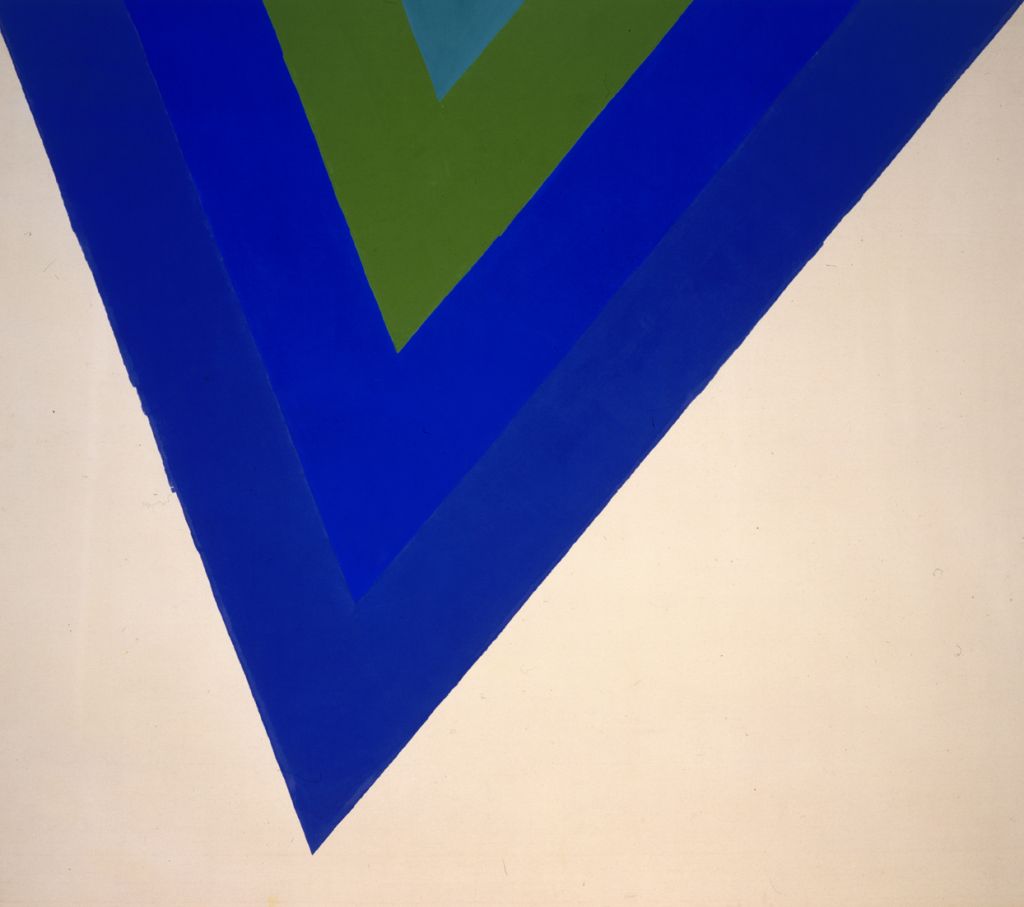Color Field Painting
06.20.2006 - 03.11.2007
In 1961, the Solomon R. Guggenheim Museum presented the exhibition American Abstract Expressionists and Imagists, a survey of current trends in art. This exhibition made apparent that there was more diversity to New York School painting than just the gestural canvases of Action Painters. Numerous exhibitions followed, most significantly Clement Greenberg's Post-Painterly Abstraction in 1964 at the Los Angeles County Museum of Art and Lawrence Alloway's Systemic Painting in 1966 at the Guggenheim. The seven artists featured in this exhibition are among the many included in these past presentations who were working against the grain of late 1950s Abstract Expressionism and turning abstraction in new directions, all while American Pop art dominated the art scene.
Greenberg's 1964 exhibition included thirty-one artists united by common stylistic traits. Emphasizing "clarity and openness" and a preference for luminous colors, Greenberg used broad definitions to link often-unnamed trends. Those applying pigment in large expanses, even covering the entire canvas, were sometimes called Color Field painters. Their work emphasized the flatness of the picture plane, marking no distinction between subject and background. To achieve this end, these artists further developed a technique pioneered by Helen Frankenthaler in 1952, the "soak-stain." This method of collapsing color into canvas by manipulating thinned acrylic washes into the unprimed cotton fabric resulted in rich, saturated surfaces. By handling paint as a dye that penetrates the fibers of the canvas rather than as a topical layer brushed over it, artists made figure and ground one and the same, uniting them through color.
Rather than use a brush, these artists poured, soaked, or sprayed the paint onto canvases, eliminating the gestural stroke that had been central to Abstract Expressionism, as in Jackson Pollock’s signature drip or Willem de Kooning’s frenetic brushwork.
Morris Louis visited Frankenthaler's studio in 1953, where he saw the first painting she made with her signature staining technique. Translating the method into his own idiom, Louis applied thinned pigment to unstretched canvas, allowing it to flow down an inclined surface. The resulting vertical bands of color, translucent and interpenetrating, form his poured paintings, referred to as Veils. In the mid-1960s, Jules Olitski began to apply layers of sprayed thinned paint, creating uninterrupted expanses of color that seem to extend the boundaries of the canvas, a revision of Pollock's "all-over" painting. The striped canvases of Gene Davis create rhythms of repeated vertical lines of varying hues, intensities, and intervals. Kenneth Noland also stained unsized canvas but approached relationships of form and color in series of works focusing on circles, chevrons, and eventually shaped-canvases. Alloway's 1966 exhibition included Noland along with Larry Poons, whose canvases of the 1960s included stained colored surfaces, dotted so as to make them appear simultaneously ordered and random. Using the term Systemic Painting, Alloway grouped artists experimenting with such variations on a theme in deliberate, serial ways with artists such as Jack Youngerman, who worked in a freer manner, but with limited coloration. Frank Stella's symmetrical shaped-canvases were also included. In 1967, Stella's Protractor series introduced curves into his work and presented a new vocabulary of form, color, and increased scale.
The Solomon R. Guggenheim Museum, engaged in collecting the varied and complex course abstraction followed in the twentieth-century, acquired these works and many other examples of Color Field, Systemic, Hard-Edge, and Geometric Abstraction paintings at the time they were made and featured them in these landmark exhibitions of the 1960s and '70s.
Kenneth Noland
Changement de transmission (Trans Shift), 1964
Acrylic on canvas
254 x 288,3 cm
Purchased with funds contributed by Elaine and Werner Dannheisser and The Dannheisser Foundation, 1981
Solomon R. Guggenheim Museum, Nueva York

